Establishing Abundant Natural Systems – One Community Weekly Progress Update #579
One Community is dedicated to establishing abundant natural systems through our all-volunteer efforts. We use sustainable approaches to food, energy, housing, education, economics, and social architecture, all designed for fulfilled living and global stewardship practices. With a model that becomes self-replicating, we’re creating a global collaboration of teacher/demonstration hubs, all working for “The Highest Good of All.” Our commitment to open sourcing and free sharing the complete process is paving the way for evolving sustainability and regenerating our planet. Join our all-volunteer team in creating a world that works for everyone.
- Here’s our project overview
- Here’s our world-change methodology
- Here’s how this becomes self-replicating
- Here’s how we are open source and free-sharing all the do-it-yourself designs
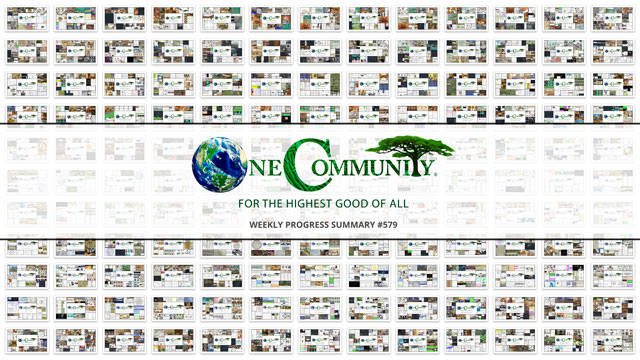
OUR MAIN OPEN SOURCE HUBS
Click on each icon to be taken to the corresponding Highest Good hub page.
One Community’s physical location will forward this movement of establishing abundant natural systems as the first of many self-replicating teacher/demonstration communities, villages, and cities to be built around the world. This is the April 22nd, 2024 edition (#579) of our weekly progress update detailing our team’s development and accomplishments:
Establishing Abundant Natural Systems
One Community Progress Update #579
DONATE | COLLABORATE | HELP WITH LARGE-SCALE FUNDING
CLICK HERE IF YOU’D LIKE TO RECEIVE AN EMAIL EACH WEEK WHEN WE RELEASE A NEW UPDATE
YOU CAN ALSO JOIN US THROUGH SOCIAL MEDIA
ONE COMMUNITY WEEKLY UPDATE DETAILS
HIGHEST GOOD HOUSING PROGRESS
 One Community is establishing abundant natural systems through Highest Good housing that is artistic and beautiful, more affordable, more space efficient, lasts longer, DIY buildable, and constructed with healthy and sustainable materials:
One Community is establishing abundant natural systems through Highest Good housing that is artistic and beautiful, more affordable, more space efficient, lasts longer, DIY buildable, and constructed with healthy and sustainable materials:
-
-
- Learn about: Our Upcoming Crowdfunding Campaign
- Learn about the different village models we’ll be building for establishing abundant natural systems: 7 Sustainable Village Models
- Visit the open source portals for the first two: Earthbag Village OS Hub | Straw Bale Village OS Hub
-
This week, Mithil Upadhyay (Mechanical Engineer) continued working on problem solving the designs for the Vermiculture Toilet. He continued completing the design of the closing mechanism as presented in the previous week. To support this mechanism, he focused on designing various components, such as shut-off blades and frames. Additionally, Mithil initiated the assembly of these components, which marked significant progress in the project as the parts began coming together for the final design. Sustainable human waste processing options, like the vermiculture toilets, are a foundation of One Community’s open source model for establishing abundant natural systems. Below are some demonstration images of his work.
Rizwan Syed (Mechanical Engineer) also continued helping to finish the Vermiculture Toilet designs. He reviewed the vermiculture volume/loading calculations sheet and the relevant reference documents attached to the calculations sheet. He double-checked the vermiculture volume/loading hand calculations to ensure the accuracy of the total mass and volume of feces while understanding the underlying assumptions on the worm feed rate. Additionally, based on insights from his weekly meeting with Chris, he researched online articles to understand different mechanisms for composting food waste and feces beneath the main chamber. Rizwan researched existing examples of vermicomposting using separate bins with human feces for a comparative analysis of composting methods. In addition, he began the design process for One Community’s vermiculture toilets in SolidWorks, brainstorming concepts for adding a chute around the assembly to ensure effective sealing of its edges. Lastly, Rizwan revisited the vermiculture toilet CAD documentation to grasp the critical design requirements of the vermiculture chamber, while also exploring design ideas for converting sloped walls to a vertical construction. The vermiculture toilets and other sustainable human waste processing technologies form the basis of One Community’s open source strategy for establishing abundant natural systems. Here are a few photos showing examples of his work.
Sajal Shah (Project Manager) continued managing completion of the Highest Good Energy components. She completed the preparation of the advertisement for the Electrical Engineer position, incorporating all received feedback and making necessary revisions. Additionally, she has initiated work on creating an advertisement for a Plumbing Engineer. Sajal is currently engaged in researching the role, focusing on identifying the specific skills and qualifications required to select the ideal candidate. The Highest Good Energy is an essential component of One Community’s open source approach for establishing abundant natural systems. See below for some of the pictures related to this work.
DUPLICABLE CITY CENTER PROGRESS
 One Community is establishing abundant natural systems through a Duplicable and Sustainable City Center that is LEED Platinum certified/Sustainable, can feed 200 people at a time, provide laundry for over 300 people, is beautiful, spacious, and saves resources, money, and space:
One Community is establishing abundant natural systems through a Duplicable and Sustainable City Center that is LEED Platinum certified/Sustainable, can feed 200 people at a time, provide laundry for over 300 people, is beautiful, spacious, and saves resources, money, and space:
-
-
- Learn about this building and its function establishing abundant natural systems: Duplicable City Center Open Source Hub
-
This week, Nika Gavran (Industrial Designer) continued her work on the Duplicable City Center dormer window installation plans. She concentrated on the assembly methods for the dormer window, as assigned. Nika researched the assembly process of the dormer window, including the tools and methods typically utilized. Following this research, she planned the sequence of attaching wood planks and the methods of attachment. Nika refined and developed various sketches. The Duplicable City Center is a foundational part of One Community’s open source designs for establishing abundant natural systems model. See below for some of the pictures related to this work.
HIGHEST GOOD FOOD PROGRESS
 One Community is establishing abundant natural systems through Highest Good food that is more diverse, more nutritious, locally grown and sustainable, and part of our open source botanical garden model to support and share bio-diversity:
One Community is establishing abundant natural systems through Highest Good food that is more diverse, more nutritious, locally grown and sustainable, and part of our open source botanical garden model to support and share bio-diversity:
-
-
- Learn about the structures and their function for establishing abundant natural systems for food: Hoop House Hub | Aquapini & Walipini Open Source Hub
- See what we’ll be growing: Gardens & Hoop Houses | Large-scale Structures | Food Forest | TA
-
This week, Charles Gooley (Web Designer) continued to work on various recipes as part of the Transition Food Self-sufficiency Plan. He incorporated nine new images to replace placeholder images and observed that the page’s length was causing significant delays in loading, leading to timeouts. He divided the page into eight smaller sections, categorizing them into rice, pasta, potatoes, sweet potatoes, and miscellaneous, with separate sections for vegan and omnivore recipes and migrated half of the recipes to their respective pages. Highest Good food is an important part in establishing abundant natural systems with One Community’s open source plans. See his work in the collage below.
Hayley Rosario (Sustainability Research Assistant) continued helping finalize the Highest Good Food rollout plan. She reviewed the EDITs document, performed additional research, and revised the Food Program Integration section. The primary focus involved a overhaul and expansion of the Integration section. She re-read both the permaculture article and the Highest Good Food Rollout plan where the key areas were identified for further investigation or refinement in the EDITs doc and were highlighted in yellow for future attention. Additionally, Hayley incorporated the feedback received to refine various topics within the section. Highest Good Housing and Highest Good food are an important part in establishing abundant natural systems with One Community’s open source plans. See her work in the collage below.
HIGHEST GOOD EDUCATION PROGRESS
 One Community is establishing abundant natural systems through Highest Good education that is for all ages, applicable in any environment, adaptable to individual needs, far exceeds traditional education standards, and more fun for both the teachers and the students. This component of One Community is about 95% complete with only the Open Source School Licensing and Ultimate Classroom construction and assembly details remaining to be finished. With over 8 years of work invested in the process, the sections below are all complete until we move onto the property and continue the development and open sourcing process with teachers and students – a development process that is built directly into the structure of the education program and everything else we’re creating too:
One Community is establishing abundant natural systems through Highest Good education that is for all ages, applicable in any environment, adaptable to individual needs, far exceeds traditional education standards, and more fun for both the teachers and the students. This component of One Community is about 95% complete with only the Open Source School Licensing and Ultimate Classroom construction and assembly details remaining to be finished. With over 8 years of work invested in the process, the sections below are all complete until we move onto the property and continue the development and open sourcing process with teachers and students – a development process that is built directly into the structure of the education program and everything else we’re creating too:
- Program Overview: Education Open Source Hub
- How the components work together as part of establishing abundant natural systems: How to use the Education for Life Program
- Lesson Plans for Life – Lesson Plans How-to
- Foundations of Outstanding Leaders, Teachers, and Communicators
- Curriculum for Life
- Teaching Strategies for Life
- Learning Tools and Toys for Life
- Evaluation and Evolution
This week, Apoorv Pandey (Mechanical Engineer) continued helping with the engineering details for the The Ultimate Classroom part of the Highest Good Education component. He examined California building blueprints to understand the title block format for the final PDF, researched additional California building codes for review, and resolved challenges in interpreting AutoCAD files through discussion with his manager, Brian Muigai Mwaniki (Structural Engineer). They explored alternative insulation options for mechanical pipes and plumbing in existing designs, and investigated CAD standard manuals specific to the state of California. Furthermore, Apoorv looked into ongoing plans for sustainable building design within the state. The One Community model of combining forward-thinking education with sustainably built classrooms like this are an excellent example of establishing abundant natural systems in education. See the collage below for their work.
HIGHEST GOOD SOCIETY PROGRESS
 One Community is establishing abundant natural systems through a Highest Good society approach to living that is founded on fulfilled living, the study of meeting human needs, Community, and making a difference in the world:
One Community is establishing abundant natural systems through a Highest Good society approach to living that is founded on fulfilled living, the study of meeting human needs, Community, and making a difference in the world:
-
-
- Read the Highest Good society overview and how it relates to establishing abundant natural systems: Highest Good Society
- Learn about the model for fulfilled living and sharing establishing abundant natural systems: A Day in the Life
- Learn about the 4 economic models for establishing abundant natural systems: RBE | For-profit | Non-profit | Entrepreneurship
- Learn about our open source community collaboration and management software: The Highest Good Network
-
This week, the core team completed over 65 hours managing One Community volunteer-work review not included above, emails, social media accounts, web development, new bug identification and bug-fix integration for the Highest Good Network software, and interviewing and getting set up new volunteer team members. They also shot and incorporated the video above that talks about establishing abundant natural systems and how establishing abundant natural systems is a foundation of the bigger picture of everything One Community is doing. The pictures below show some of this work.
Aaron Wang (Fundraising Assistant) deepened his research on connections with Leonardo DiCaprio as a possible funding sources for One Community, gathering emails, LinkedIn profiles, and background information of individuals potentially linked to DiCaprio, including Camila Morrone and Blake Lively. This research is part of a strategy to better connect with funders by establishing relationships with relevant individuals associated with these connections. His thorough approach is aimed at enhancing his networking capabilities and forging significant relationships within the philanthropic community. Establishing win-win relationships like this is a big component to One Community’s vision for establishing abundant natural systems. The following images highlight his work for the week.
Arun Chandar Ganesan (Volunteer Data Analyst And SEO And Social Media Assistant) completed the SEO process and proceeded to analyze the metrics from the Facebook page. He worked on A/B testing to test performance and communicated the results to stakeholders. Arun also scheduled content for social media pages and began posting on Instagram. Additionally, he scheduled posts for Earth Day and reviewed SEO pages for others. Search engine optimization and regularly working on content are important parts of One Community‘s model for establishing abundant natural systems. The following images show his work for the week.
Faisal Rasheed (Graphic Designer) focused on various design tasks, including recreating a table by Tara Hammonds summarizing each component with the title “Scale of Permanence Checklist.” Additionally, he remade a “One Community’s” SWOT analysis graphic, ensuring clarity and accuracy in representing the data. Moreover, he recreated another SWOT analysis graphic sourced from Wikipedia, paying attention to details and clarity. These efforts involved conceptualizing, designing, and refining graphics to effectively communicate key information. Collaborating with team members, Faisal ensured that the designs met project requirements and client expectations. Completing these images contributes to One Community‘s vision for establishing abundant natural systems. The images below show his progress for the week.
ADMINISTRATION TEAM
The Administration Team’s summary, covering their work administrating and managing most of One Community’s ongoing process for establishing abundant natural systems was managed by Vriddhi Misra (Admin and Marketing Assistant) and includes Camilla Okello (Administrative Assistant), Durgeshwari Naikwade (Data Analyst), Jessica Fairbanks (Administrative Assistant), Meenakshi Velayutham (Sustainability Associate), Olawunmi “Ola” Ijisesan (Administrative and Management Support), Ram Shrivatsav (Data Analyst and Admin assistant), Ratna Meena Shivakumar (Data Analyst and Admin), Ruiqi Liu (Administrative Assistant), Sneka Vetriappan (Data Analyst), T R Samarth Urs (Data Analyst), Vibhav Chimatapu (Data Analyst/Admin Assistant), Xiaolai Li (Administrative Assistant), and Zuqi Li (Administrative Assistant and Economic Analyst). This week, Camilla assumed administrative duties post-HGN network repair and assisted in reviewing another individual’s work, subsequently optimizing assigned blogs. With the help of ChatGPT, she generated SEO terms for images in the initial five blogs. Camilla also optimized the initial three blogs by incorporating keywords until achieving the required density. Durgeshwari focused on completing SEO tasks for 10 content blocks and led a meeting to refine HR data visualization metrics. Jessica worked on job advertisements for Highest Good Foods and took interviews with volunteer candidates. Meenakshi continued admin tasks, executed workflow processes, and collaborated on image integration for web pages. Ola reviewed PR teamwork, managed progress tracking, and provided feedback. Ram reviewed and corrected previous work, fixed SEO issues on articles, and worked on HGN product front-end testing. Ratna prepared progress updates, held interviews, and enhanced SEO on blogs. Ruiqi completed reviews for various teams, created collages, and optimized SEO for blogs. Sneka focused on OC Administration tasks, including timelog management and tutorial development. Samarth managed a PR review team, applied SEO techniques, and reviewed fellow admin teamwork. Vibhav incorporated feedback from PR review training and enhanced on-web page SEO. Vriddhi coordinated admin team efforts, managed the SEO Team, trained new managers, and began work on the next blog. Xiaolai finished reports, updated web pages, and worked on financial sheets. Zuqi organized the weekly summary for the Graphic Design Team, reviewed admin updates, and optimized blogs for SEO. One Community’s model for establishing abundant natural systems includes developing and maintaining a huge administration team like this. You can see the work for the team in the image below.
GRAPHIC DESIGN TEAM
The Graphic Design Team’s summary was managed by Zuqi Li (Administrative Assistant and Economic Analyst) and included Ashlesha Navale (Graphic Designer), Britney Robles (Graphic Designer), Nancy Mónchez (Graphic Designer), Shayan Afkari (Graphic Designer) and Zixi Zhang (Graphic Designer), covering their work on graphic designs for establishing abundant natural systems. Ashlesha worked on creating two social media images themed Cooperation-Stop Global Warming and Cooperation-Sustainable Civilization. She also researched and curated nature-based and theme-based background images for future social media content and created fourteen recipe images for a new graphic design task. Britney worked on developing materials for a volunteer announcement page, including creating a profile photo and a bio image, as well as updating the page content for publication. She designed nine social media graphics that addressed sustainability and regenerative communities. Nancy redesigned posts, experimenting with new styles and elements to enhance message relevance, and addressed technical issues with the HGN APP by reporting them to the manager, resulting in a resolution by the software team. She also corrected an image from week number 20. Shayan engaged with documentation and tutorial videos to understand the organization’s operations and goals. He used Adobe Photoshop to produce announcement imagery that incorporated elements from One Community’s graphics repository and their MidJourney AI-driven platform. Zixi generated eleven social media images, ensuring each corresponded with the provided text using Photoshop and an AI photo generator. She also created Peterson’s profile image, bio image, and announcement page, utilizing her skills in graphic design and web coding to integrate these elements. See the Highest Good Society pages for more on how this contributes to establishing abundant natural systems. See the collage below to view some of their work.
HIGHEST GOOD NETWORK PROGRESS
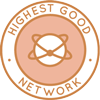 One Community is establishing abundant natural systems through open source Highest Good Network® software that is a web-based application for collaboration, time tracking, and objective data collection. The purpose of the Highest Good Network is to provide software for internal operations and external cooperation. It is being designed for global use in support of the different countries and communities replicating the One Community sustainable village models and related components.
One Community is establishing abundant natural systems through open source Highest Good Network® software that is a web-based application for collaboration, time tracking, and objective data collection. The purpose of the Highest Good Network is to provide software for internal operations and external cooperation. It is being designed for global use in support of the different countries and communities replicating the One Community sustainable village models and related components.
- Learn about this open source community collaboration and management software: The Highest Good Network
This week, the core team worked on the Highest Good Network PRs testing, confirming the fixed PRs including PR#2095 for setting up correct style in the Home Country option modal, PR#1331, PR#2134 for removing admin or owner ability to delete themselves, PR#1915 for adding more specific link validation for GDoc links, PR#2024 for removing inactive accounts from the “Generate Summary Intro” button, PR#1987 for adding a Project Page title and relevant Project information to the right side summary, PR 2069 for fixing map component scrolling, PR 1565 for making the ‘Save’ button visible to users with ‘Edit User Profile’ permission, as well as creating the “Submit for Review” Button in PR#1045 and #482. However, the following PRs remain unfixed: 2124+861, which adds the user’s ability to check entered passwords to reveal the weeklySummaryRecipient for Authorized users only, with the absence of the WeeklySummaryRecepients button on the Weekly Summaries Report page for Owner or Admin accounts; the addition of a scheduled-on date to scheduled blue square reasons in PR 1641+640 – PR 2009+779, with a discrepancy in the format of “Created Date” and “Blue Square Date”; the lack of a popup “i” icon on the Weekly Summaries Reports page in PR 1910; and the persisting scrollbar issue on the Team Management page in PR 1809 + PR 2002. See the Highest Good Society and Highest Good Network pages for more on how this relates to establishing abundant natural systems. See the collage below for their work.
ALPHA SOFTWARE DEVELOPMENT TEAM
The Alpha Team’s summary, covering their work on the Highest Good Network software was managed by Sucheta Mukherjee (Software Developer) and includes Anand Seshadri (Software Engineer), Gayathridevi Chithambaram (Full Stack Developer), Jaiwin Thumber (Front-End Develolper), Jordy Corporan (Software Engineer), Lin Khant Htel (Frontend Software Developer), Pratima Singh (Software Developer), and Shamim Rahman (Software Engineer). The Highest Good Network software is how we’ll be managing and objectively measuring our process for establishing abundant natural systems through our social architecture, construction, production, and maintenance processes. This week, Jaiwin worked on fixing errors and learning more about how the software functions, particularly in React and Git, while also optimizing the application for mobile devices. Lin reviewed and approved 8 pull requests on the HGN GitHub repository, familiarized himself with all relevant documents related to the development team, and actively worked on improving his understanding of unit testing and test-driven development, encountering failed test cases while writing unit tests for the dashboardController and resolving these issues. Throughout the week, Lin also deepened his knowledge of codebases, file structures, and components. Imran did his part on this software for measuring our process for establishing abundant natural systems as he fixed permission issues related to deleting tasks (#2156), Nahiyan implemented a Dark Mode feature for the User Profile Page (#2162), Shereen wrote unit tests for weeklySummary and weeklySummaryModal (#2164) as well as for UserProfile and UserProfileAdd (#2174), Abi added badge tests (#899), Hoang added functionalities to copy project reports (#2163), Shengjie worked on unit tests for tinyce (#2165), and Sucheta improved the format of the Add New Task modal (#2167).
Pratima refactored the HorizontalBarChart.jsx to enable the display of values at the end of each bar, updated the TasksProjectsStats.jsx to incorporate the revised MultiHorizontalBarChart component, and coded API calls for each component within the Overview Reports component. Collaborative initiatives began as she partnered with Yi and Abi on API integration, during which she encountered 404 Not Found errors on the overview report’s endpoints, leading to further investigation. Shamim did his part on this software for measuring our process for establishing abundant natural systems as he reviewed 9 different pull requests (PRs), tested their functionality rigorously, and provided feedback with accompanying screenshots and videos, addressing issues encountered in PR#1990 and PR#1910. Sucheta focused on implementing an eye icon feature and formatting the addTaskModal, and assisted team members during the weekly team meeting. Jordy did his part on this software for measuring our process for establishing abundant natural systems as he concentrated on expanding his proficiency in unit testing with an emphasis on using Jest, engaging in reviewing pull requests and developing unit tests for the notification controller. Anand worked on feature 28 from the HGN Phase I sheet, focusing on ensuring a related link is required when submitting a task for review, and raised a pull request under PR 2185. Gayathridevi focused on setting accurate dates within the software, particularly on the Profile Page, Reports (People section), and the User Management page, aiming to ensure a person’s end date corresponds to the last week they contributed hours, with the last day of that week serving as their end date, and working to enable Owners/Admins to edit a person’s end date from their Profile page to enhance the software’s functionality. See the Highest Good Society and Highest Good Network pages for more on how this relates to establishing abundant natural systems. View some of the team’s work in the collage below.
BADGES BUGS SOFTWARE DEVELOPMENT TEAM
The Badges Bugs Team’s summary overseeing advancements in the Highest Good Network software was managed by Shaofeng Li (Software Engineer) and includes Renan Luiz Santiago Martins César (Full-stack developer), Summit Kaushal (Backend Software Developer), Xiao Zhang (Software Engineer), and Xiaohan Meng (Software Engineer). The Highest Good Network software is how we’ll be managing and objectively measuring our process for establishing abundant natural systems through our social architecture, construction, production, and maintenance processes. This week, Renan focused on resolving various tasks related to his work. He began by watching a video tutorial on timelog and profile page functionality, seeking solutions to encountered issues. Additionally, he addressed problems with his pull request (PR), actively seeking resolution and awaiting feedback from his team. He also engaged with his team to discuss and resolve PR conflicts, to overcome challenges with running nodemon due to project conflicts. Summit created a new branch for their task, incorporating the latest codebase and ensuring its integrity by reviewing and removing unnecessary function calls, specifically addressing an issue in awarding new badges. He also worked on testing and review on Pull Requests (PRs) 890 and 901, ensuring functionality met expectations.
Additionally, Summit identified and resolved discrepancies in the codebase, particularly in the badge count incrementation process. During debugging sessions, the focus was on the userHelper.js functions, primarily aiming to fix the inconsistency in badge counts and implementing solutions to ensure accurate updates, with careful verification of the changes’ effectiveness. Shaofeng did his part on this software for measuring our process for establishing abundant natural systems as he worked on HGN Software Development, engaging in various activities aimed at project advancement. He reviewed PRs, providing feedback on their readiness for merging. Shaofeng participated in team meetings, sharing progress updates and engaging in discussions regarding new tasks. The team addressed reported bugs by attempting to reproduce them in their local environment and collaborated with colleagues to resolve conflicts in their PRs. Additionally, they utilized Slack as a communication platform, providing clear directions to team members and facilitating effective collaboration. Xiao did his part on this software for measuring our process for establishing abundant natural systems as he concentrated on creating a unit test to verify the accurate assignment of badges in the app. The test was created to check that each badge activates correctly based on set conditions, sticking closely to established criteria. This involved setting the parameters for each badge, programming the test scenarios, and running them to observe the results. The task demanded attention to detail and a deep understanding of both the existing codebase and the intended functionalities of the badges. End of the week, initial test results were evaluated, prompting revisions to the badge allocation logic to improve both accuracy and dependability.
Xiaohan resolved conflicts in the Pull Request for the ‘Assign Badge on profile’ feature upon Jae’s request, preparing it for merging. She also addressed problems with missing and duplicate badges, conducting checks in the frontend, backend, and database to ensure the completeness and integrity of badge information. See the Highest Good Society and Highest Good Network pages for more on how this relates to establishing abundant natural systems. View some of the team’s work in the collage below.
BLUE STEEL SOFTWARE DEVELOPMENT TEAM
The Blue Steel Team’s summary, presenting their work on the Highest Good Network software, was managed by Nathan Hoffman (Software Engineer, Team Manager), and includes Bhuvan Dama (Full stack Developer), Jingyi Jia (Software Engineer), Sanket Kaware (Full-Stack Developer), Shiqing Pan (Full-Stack Software Developer), Tzu Ning “Leo” Chueh (Software Engineer), Xiao Wang (Software Engineer), and Yaohong Xiang (Software Engineer). The Highest Good Network software is how we’ll be managing and objectively measuring our progress as we’re establishing abundant natural systems throughout our social architecture, construction, production, and maintenance processes. This week, Nathan reviewed Imran’s delete task PR and resolved a miscommunication with Weiyao on Slack, responded to Jae on Slack, and reviewed PR 2052 for swapping permissions from strings to constants. Additionally, they explored automating the weekly gathering of images on Dropbox, figured out the Dropbox API for obtaining the most recent subfolder, and began developing a loop for collecting images from team members, achieving partial automation of Dropbox photo collection, pending implementation of mutex, OAuth, and testing.
Yaohong did his part on this software for measuring our process for establishing abundant natural systems as he continued addressing issues in pull requests #PR2092 and #PR2130, focusing on resolving console logging errors, input field errors related to team and project assignments, and a bug causing simultaneous error and success messages display when the media folder was incorrect. Bhuvan calibrated edge cases for ReportPage.jsx and unit testing TableFilter.jsx throughout the week. Jingyi made enhancements to the permission management system within the project, ensuring that necessary permissions such as ‘getProjectMembers,’ ‘sell Users,’ ‘editUserProfile,’ ‘modifyImportantUserInfo,’ and ‘edit task’ are activated simultaneously, streamlining the user experience. Sanket focused on creating trophy icons for work anniversaries and addressed an issue regarding the follow-up feature not functioning for a specific user. Shiqing did her part on this software for measuring our process for establishing abundant natural systems as she completed the final review and resolved conflicts for Pull Request 1464, enhancing the Reports view functionality, and initiated a new PR for further reviews.
Xiao continued his work on time entry refactor PRs and assisted with Christy’s PRs, identifying and addressing sessionStorage-related issues. Tzu Ning resolved a bug related to dynamic updating of team codes in the WeeklySummariesReport component, enhancing its reliability and user experience. See the Highest Good Society and Highest Good Network pages for more on how this relates to establishing abundant natural systems. See below to view their work.
CODE CRAFTERS SOFTWARE DEVELOPMENT TEAM
The Code Crafters Team’s summary, covering their work on the Highest Good Network software, was managed by Ruiqi Liu (Administrative Assistant) and includes Anirudh Dutt (Software Engineer), Ramya Ramasamy (Software Engineer), Shantanu Kumar (Software Developer), Shengjie Mao (Software Engineer), Weiyao Li (Software Engineer) and Xiaoyu Chen (Software Engineer). The Highest Good Network software is how we’ll manage and objectively measure our process for establishing abundant natural systems throughout our social architecture, construction, production, and maintenance processes. Anirudh collaborated with Diego and team members to write unit tests after catching up with work following a two-week absence due to personal illness. He also reviewed PRs and resolved merge conflicts on his permissions constant PR while completing two unit test cases for the login controller. Ramya focused on completing the remaining tasks, marking the PR for PeopleTableDetails as a high-priority review, and nearing completion on the limit-see-all bug and basicInformationTab unit test cases. Shantanu did his part on this software for measuring our process for establishing abundant natural systems as he concentrated on improving his proficiency in backend test case writing, studying materials to deepen understanding, and resolving challenges in generating dummy data for test cases.
Shengjie developed unit tests for a component, addressing issues within the codebase and expanding test coverage for edge cases. Weiyao worked on creating a new user feature, discussing changes in requirements with Jae and Nathan, and updating existing code to match new requirements. Xiaoyu focused on finalizing and merging a previously opened pull request, resolving errors related to MongoDB in the GetInformation unit test, and addressing comments and revisions on multiple pull requests. She also worked on implementing blue bold requirements set by Jae on administrative content, troubleshooting email sending failures, and refining the visual layout to ensure optimal display across devices. See the Highest Good Society and Highest Good Network pages for more on how this relates to establishing abundant natural systems. The collage below shows some of this work.
DEV DYNASTY SOFTWARE DEVELOPMENT TEAM
The Dev Dynasty Team’s summary, covering their work on the Highest Good Network software, was managed by Nahiyan Ahmed (Full Stack Software Developer) and includes Harsh Bodgal (Software Engineer), and Mingqian Chen (Software Engineer). The Highest Good Network software is how we’ll be managing and objectively measuring our progress as we’re establishing abundant natural systems throughout our social architecture, construction, production, and maintenance processes. Harsh addressed two bugs, one of which was reopened by Jae after initial resolution due to ongoing issues with the solution. Mingqian began by studying files detailing phase one bugs and necessary functionalities and unit testing documentation for orientation. She reviewed various items in the bug file, noting completed or claimed tasks, and selected item 24, concerning discrepancies in the code of the UserProfileAdd component. Nahiyan authored documentation for dark mode implementation and enhanced the GitHub pull request template to remind testers to evaluate new features for dark mode compatibility, managing merge conflicts stemming from dark mode pull requests throughout the week. See the Highest Good Society and Highest Good Network pages for more on how this relates to establishing abundant natural systems. The collage below shows some of this work.
EXPRESSERS SOFTWARE DEVELOPMENT TEAM
The Expressers Team’s summary, covering their work on the Highest Good Network software, was managed by Ruiqi Liu (Administrative Assistant) and includes Christy Guo (Software Engineer), Mohammad Abbas (Software Engineer), and Shereen Punnassery (Full Stack Software Engineer). The Highest Good Network software is how we’ll manage and objectively measure our process for establishing abundant natural systems throughout our social architecture, construction, production, and maintenance processes. Christy reviewed documentation and enhanced test cases for the team controller, focusing on both unit and integration tests, while continuing her work on adding a visualization feature to the Projects Reports page, addressing both frontend and backend aspects. She also created follow-up pull requests to address inconsistencies across multiple tabs, updating unit tests and integration tests in the teamController file. Mohammad resolved the hour delay task despite constraints from final exams, aiming to complete his outstanding work by Saturday to maintain project progress. Shereen finished the unit testing for the AddUserProfile component, resolving Redux store issues and adding a ‘data-testid’ attribute for testing, before pushing the code to GitHub and creating a corresponding pull request. See the Highest Good Society and Highest Good Network pages for more on how this relates to establishing abundant natural systems. The collage below shows some of this work.
GIT-R-DONE SOFTWARE DEVELOPMENT TEAM
The Git-R-Done Team’s summary, covering their work on the Highest Good Network software, was managed by Chris Chen (Software Engineer Intern) and includes Hiral Soni (Full Stack Developer), Nidhi Galgali (Software Developer), Rhea Wu (Software Engineer), and Shuhua Liu (Full-Stack Developer). The Highest Good Network software is how we’ll manage and objectively measure our process for establishing abundant natural systems throughout our social architecture, construction, production, and maintenance processes. Hiral focused on resolving a warning message in the console log on the dashboard page, and implementing a solution to remove the warning. Nidhi resumed her work on unit test cases for the Blue Square Layout, reviewing test cases for other components to resolve issues with mock data and addressing one test case issue using Thunk. Rhea did her part on this software for measuring our process for establishing abundant natural systems as she assigned tasks, testing functions exploring life cycles, and testing for new issue routing and controller. Shuhua revisited PRs submitted for previous tasks, including implementing edit and delete functionality in the Inventory pages and creating a different view for the summary bar, facing merging issues with new changes in production code, and addressing merging conflicts to maintain compatibility with the latest changes. See the Highest Good Society and Highest Good Network pages for more on how this relates to establishing abundant natural systems. The collage below shows some of this work.
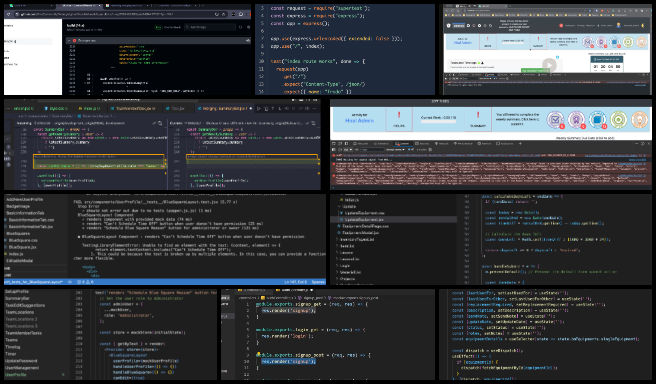
MOONFALL’S SOFTWARE DEVELOPMENT TEAM
Moonfall Team’s summary, covering their work on the Highest Good Network software, was managed by Lu Wang (Software Engineer) and includes Abdelmounaim “Abdel” Lallouache (Software Developer), Cheng-Yun Chuang (Software Engineer), Haoji Bian (Software Engineer), Imran Issa (Software Developer), Jiadong Zhang (Software Engineer) and Nnamdi Ikenna-Obi (Software Engineer). The Highest Good Network software is how we’ll be managing and objectively measuring our process for establishing abundant natural systems throughout our social architecture, construction, production, and maintenance processes. Abdelmounaim enhanced notification emails for time-off requests, resolved issues with request updates not reflecting on profiles, and tackled conflicts on both frontend and backend, ensuring proper functioning through testing.
Cheng-Yun implemented unit tests for WBS.jsx and revamped Members.test.jsx, focusing on testing functionalities and button rendering. Haoji made a significant update to the application’s image fetching logic, removing the email notification system to streamline the process of retrieving multiple images. He also resolved a conflict in PR1784 and completed a review of its features to ensure flawless functionality. Iven worked on implementing admin/owner approval for suggested changes on tasks, addressing issues with pull requests and proposing changes to ensure correct workflows. He also analyzed and implemented filters for manager roles on the dashboard tasks. Jiadong replaced a badge on the dashboard, actively engaging in the review process and ensuring seamless functionality. Lu did her part on this software for measuring our process for establishing abundant natural systems as she focused on debugging the EditTaskModal file and providing assistance with team management tasks, ensuring rendering without crashes, correct initialization of state values, and proper modal toggling. Nnamdi completed tasks and worked on troubleshooting pull requests while using a GitHub code space. See the Highest Good Society and Highest Good Network pages for more on how this relates to establishing abundant natural systems. Look below for a collage of their work.
REACTONAUTS’ SOFTWARE DEVELOPMENT TEAM
Reactonauts’ Team’s summary, covering their work on the Highest Good Network software, was managed by Masasa Thapelo (Software Engineer) and includes Abi Liu (Software Engineer), Changhao Li (Software Engineer), Dhairya Mehta (Software Engineer), Hetvi Patel (Full stack Developer), Hoang Pham (Software Developer), Peterson Rodrigues (Full-Stack MERN Stack Developer), Shengwei Peng (Software Engineer), Shiwani Rajagopalan (Software Engineer) and Vikram Badhan (Software Engineer). The Highest Good Network software is how we’ll be managing and objectively measuring our process for establishing abundant natural systems throughout our social architecture, construction, production, and maintenance processes. Abi completed unit testing for the wbsController methods, covering positive and negative cases. Additionally, Abi participated in multiple peer programming sessions with Luis to assist in understanding proper unit testing procedures.
Changhao worked on the development of unit tests, assisted the team with unit test-related issues, and reported weekly progress to the team. Dhairya focused on addressing the issue with the “Fix Projects find user function.” He investigated the functionality of finding a user in the projects section and discovered that the search filter is not functioning correctly. Hetvi reviewed all old pull request reviews on GitHub and actively worked on addressing them. Hoang raised PR#2163 to address adding copy functionality and fix project report table stylings, incorporating changes from an ongoing PR#2155. Peterson did his part on this software for measuring our process for establishing abundant natural systems as he finalized the implementation of the autocomplete feature for the input, creating responsive design, and adding functionality to automatically close the autocomplete menu when the user clicks outside of it. Shengwei primarily focused on the development task of eliminating Sentry errors. He upgraded the backend Sentry node to a newer version, resulting in capturing more information and making the Sentry log more descriptive. Shiwani focused on two tasks: TimeEntriesViz unit tests and BMLogin unit tests. In the TimeEntriesViz unit tests, she added four test cases to assess the functionality of various elements, including the Labels Off button, Show Daily Hours labels, Show Dates labels, and label values. Vikram focused on unit testing for the WeeklySummaryOptions.jsx and ToggleSwitchContainer.jsx files. This involved implementing various test cases to ensure the functionality and reliability of the components. See the Highest Good Society and Highest Good Network pages for more on how this relates to establishing abundant natural systems. Look below for pictures of this work.
SKYE’S SOFTWARE DEVELOPMENT TEAM
Skye’s summary, covering their work on the Highest Good Network software, was managed by Luis Arevalo (Front End Developer) and includes Bhuvaneswari Gnanasekar (Software Engineer), Clemar Nunes (Web Developer), Jiarong Li (Software Engineer), Raj Nada (Software developer) and Yao Wang (Software Engineer). The Highest Good Network software is how we’ll be managing and objectively measuring our progress as we’re establishing abundant natural systems throughout our social architecture, construction, production, and maintenance processes. Bhuvaneswari focused on identifying and initiating a task related to permission management. She created a new GitHub branch and pulled the development branch to begin her work. Bhuvaneswari also identified the specific file she would be working on and reviewed the permission management document to understand the requirements and the codebase’s format.
Clemar completed two key features by implementing a permission verification system to restrict profile editing and deletion based on user permissions, ensuring corresponding buttons were disabled for users without appropriate permissions, completing a final code review, and preparing a pull request with detailed descriptions of changes and confirmation of tests. Jiarong worked on enhancing user management functionalities within the HGN Software Development project, reviewing files such as UserTableSearchHeader.jsx, UserSearchPanel.jsx, UserManagement.jsx, and UserTableData.jsx to consider options for improving data handling, including adding an edit button at the top of data columns or an edit icon to each user data entry. Additionally, layout issues were addressed by adjusting the Role dropdown field to align in height with other search fields and centering the alignment of the Hrs search field over the hours. Raj did his part on this software for measuring our process for establishing abundant natural systems as he identified and resolved a bug concerning Sentry integration. Yao resolved conflicts in PR1895 and errors in PR1990 before progressing with the development of a feature that sends emails to administrators after user deactivation, completing the frontend portion and shifting focus to backend development. Luis continued to work on the unit tests for the warnings controller, encountering difficulties with the post warning route. See the Highest Good Society and Highest Good Network pages for more on how this relates to establishing abundant natural systems. See the collage below for some of their work.
SOFTWARE PR REVIEW TEAM A-L
The PR Review Team’s summaries for team members’ names starting with A-L and covering their work on the Highest Good Network software was managed by Vibhav Chimatapu (Data Analyst/Admin Assistant). The Highest Good Network software is how we’ll be managing and objectively measuring our progress as we’re establishing abundant natural systems throughout our social architecture, construction, production, and maintenance processes. This week’s active members of this team were: Aaron Persaud (Software Developer), Aaryaneil Nimbalkar (Software Developer), Huijie Liu (Software Engineer), KaiKane Lacno (Software Developer and Team Manager), Kurtis Ivey (Software Engineer), and KyoSook Shin (Software Engineer). They reviewed all the Highest Good Network PRs (Pull Requests) shared in this week’s update. Learn more about how the Highest Good Network will measure and assist in establishing abundant natural systems in the Highest Good Network open source hub. The collage below shows a compilation of the work from this team.
SOFTWARE PR REVIEW TEAM M-Z
The PR Review Team’s summary covering their work on the Highest Good Network software was managed by Olawunmi Ijisesan (Administrative and Management Support) and Samarth Urs (Administrative Assistant and Data Analyst). The Highest Good Network software is how we’ll be managing and objectively measuring our progress as we’re establishing abundant natural systems throughout our social architecture, construction, production, and maintenance processes. This week’s active members of this team were: Gowtham Dongari (Software Engineer), Mengtian Chen (Software Engineer), Olga Yudkin (Software Engineer), Tim Kent (Full Stack Software Engineer), Yiyun Tan (Software Engineer), Youyou Zhang (Software Developer) and Zijie “Cyril” Yu (Software Engineer). They reviewed all the Highest Good Network PRs (Pull Requests) shared in this week’s update. Learn more about how the Highest Good Network will measure and assist in establishing abundant natural systems in the Highest Good Network open source hub. The collage below shows a compilation of the work from this team.
AND WE PRODUCED THIS WEEKLY UPDATES BLOG – CLICK HERE TO SUBSCRIBE
FOLLOW ONE COMMUNITY’S PROGRESS (click icons for our pages)
INVESTOR PAGES
GET INVOLVED
DONATE ● WAYS ANYONE CAN HELP ● MEMBERSHIP
CLICK HERE FOR ALL PAST UPDATES
 One Community
One Community


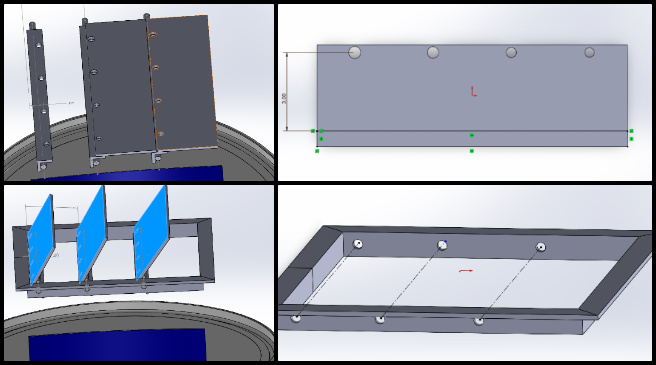
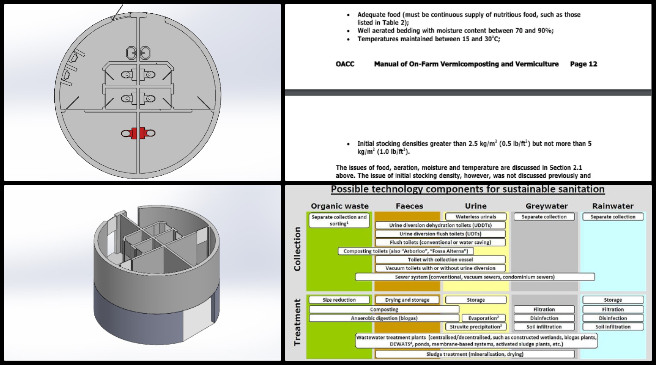
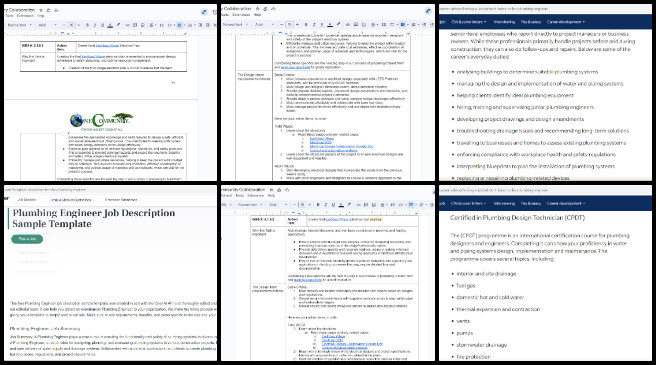
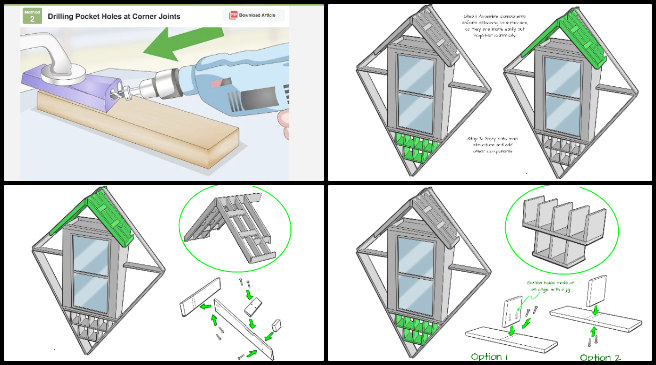
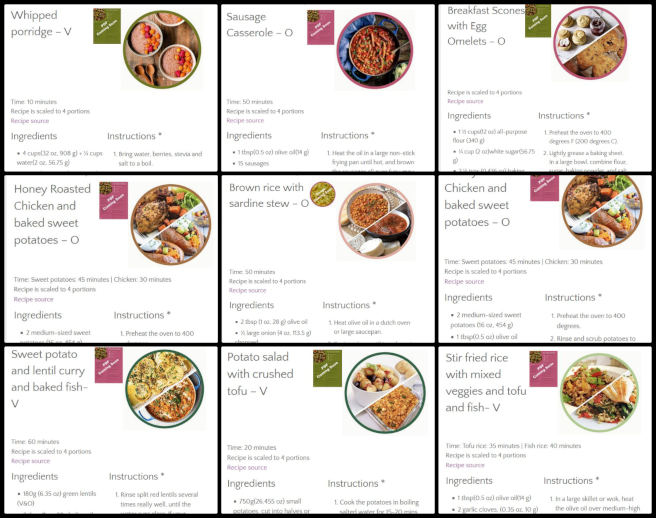
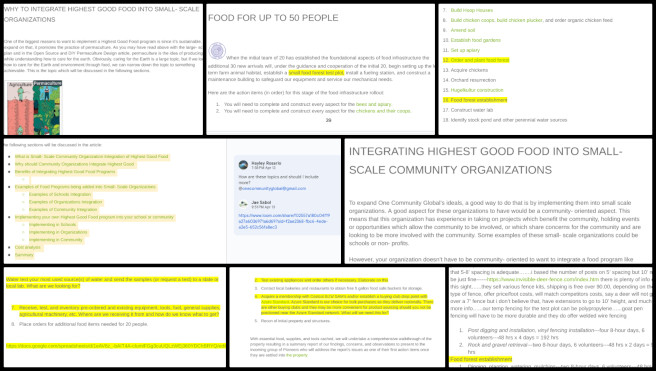
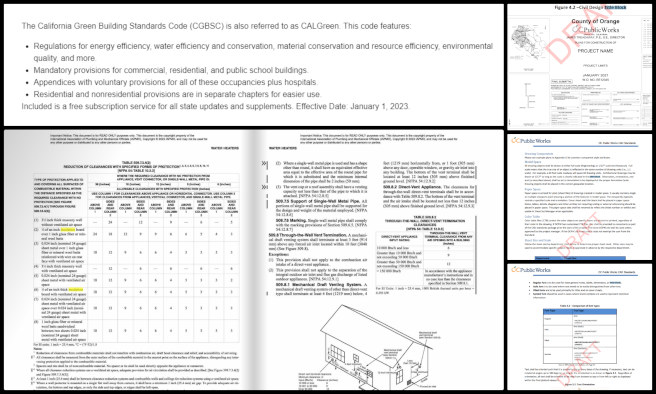
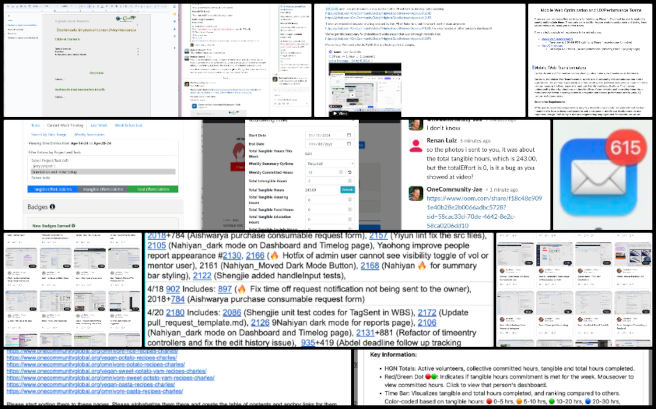
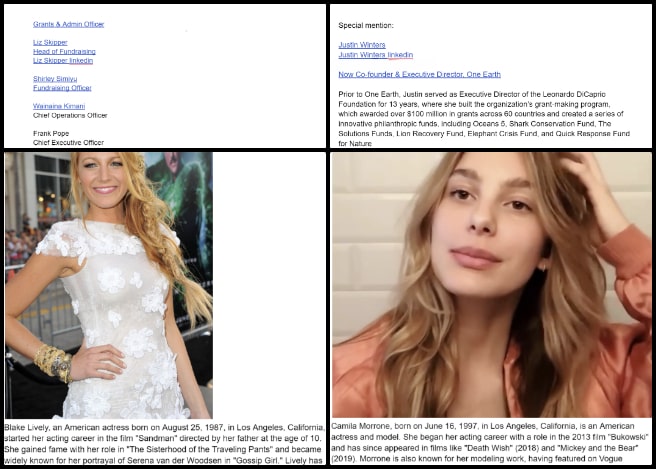
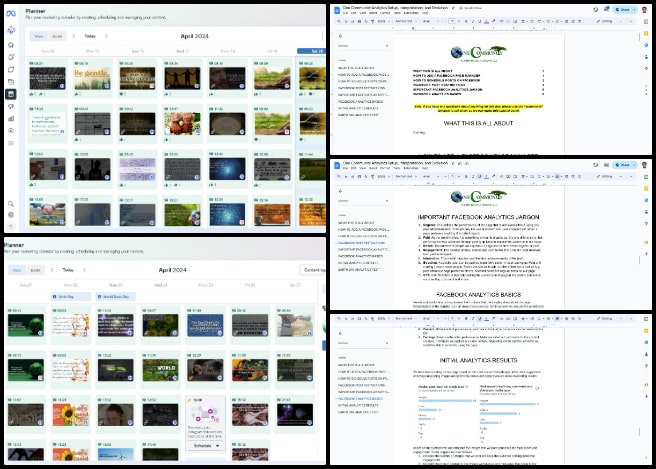
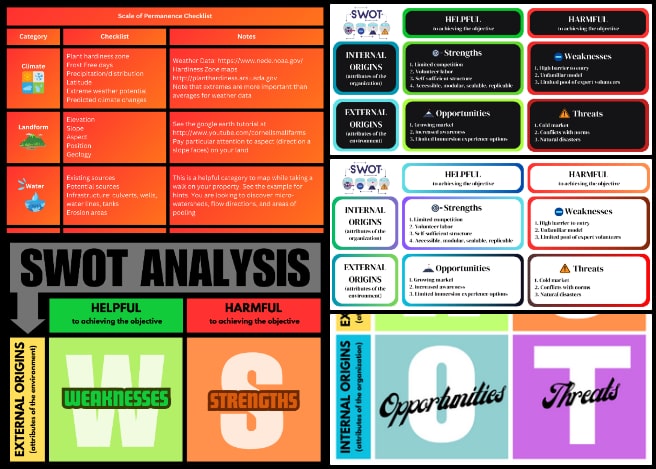
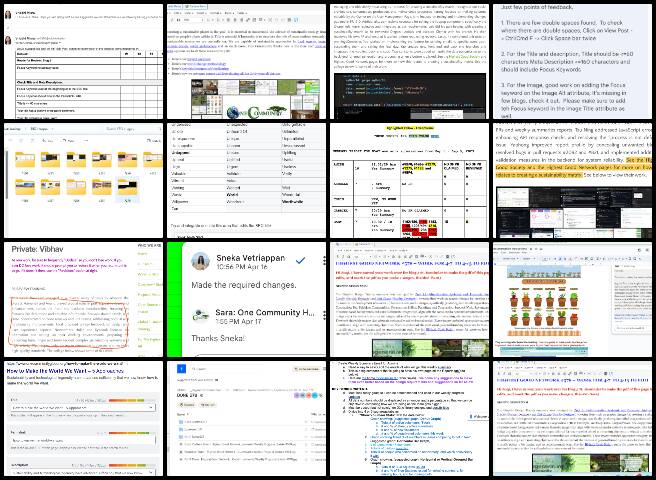
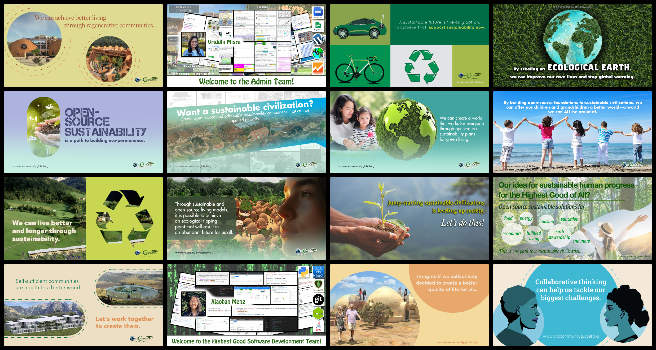
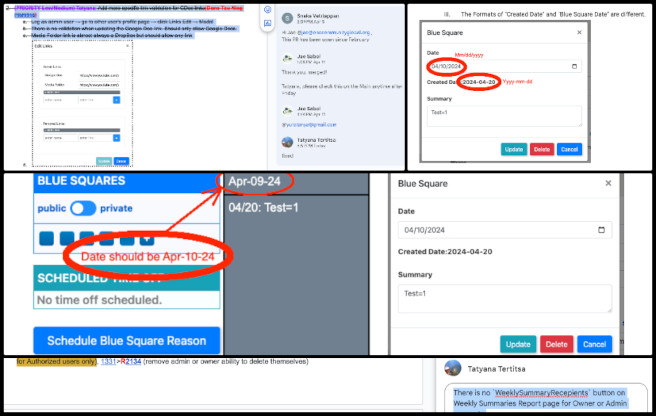
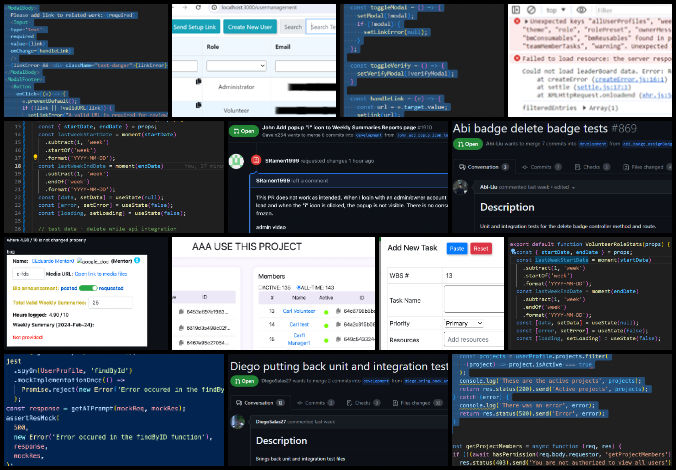
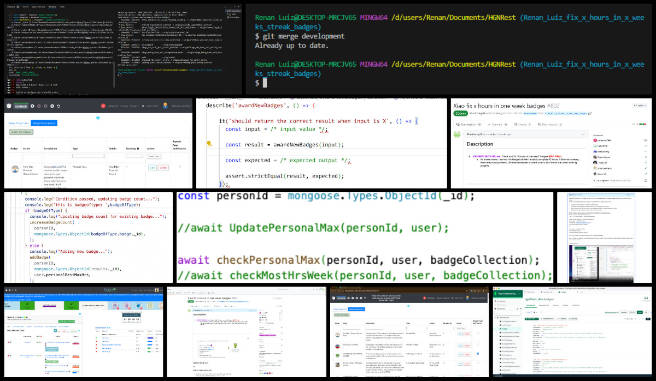
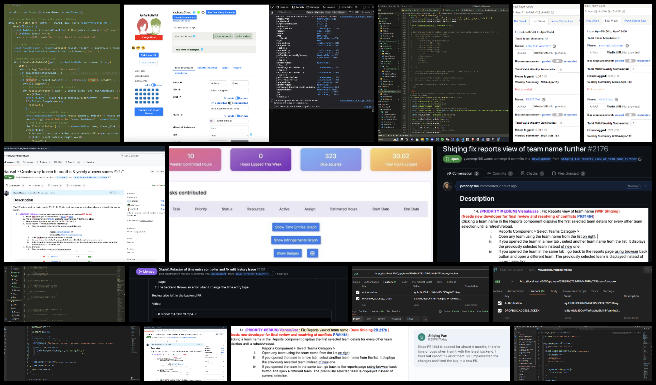
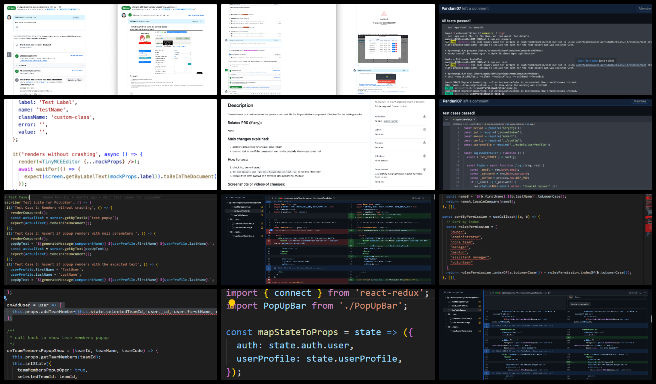
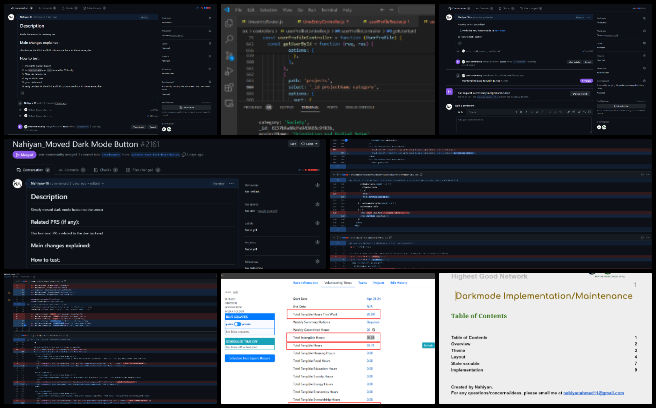
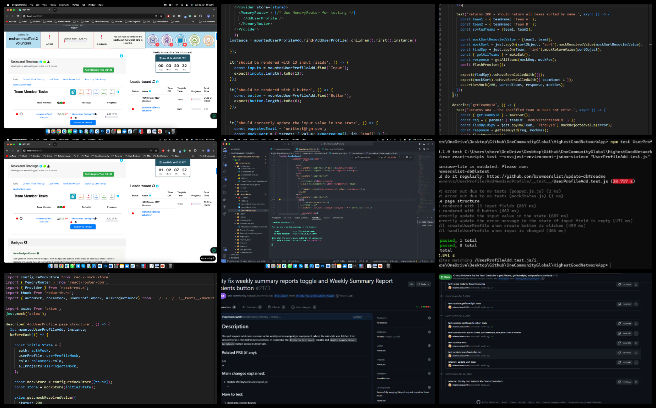
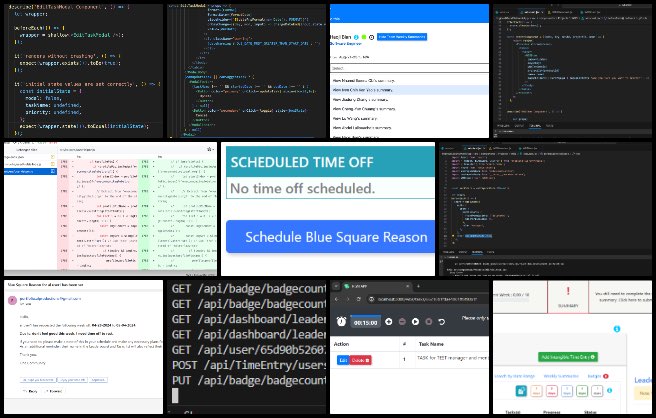
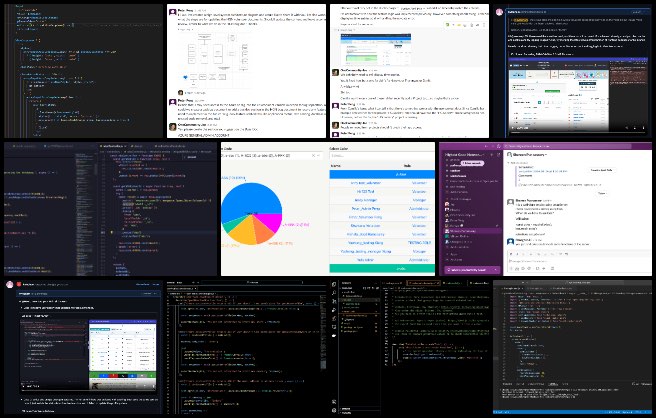
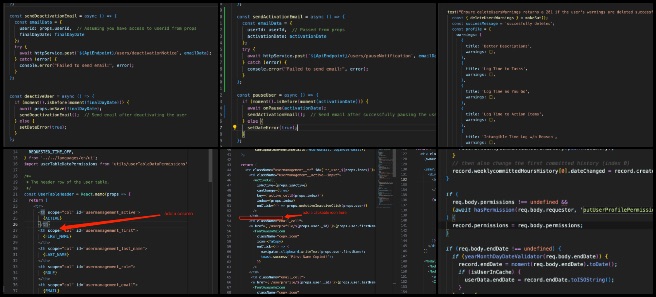
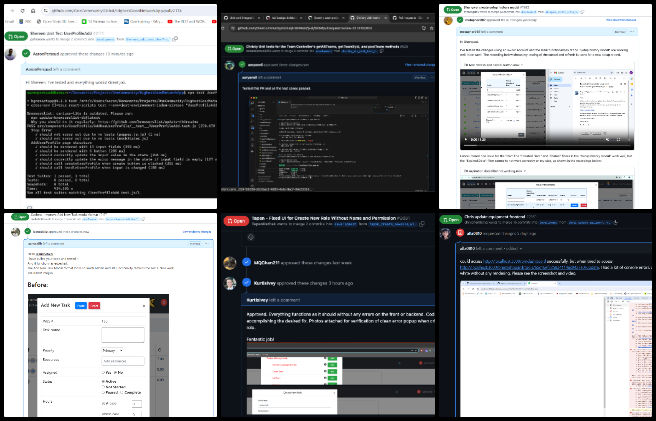
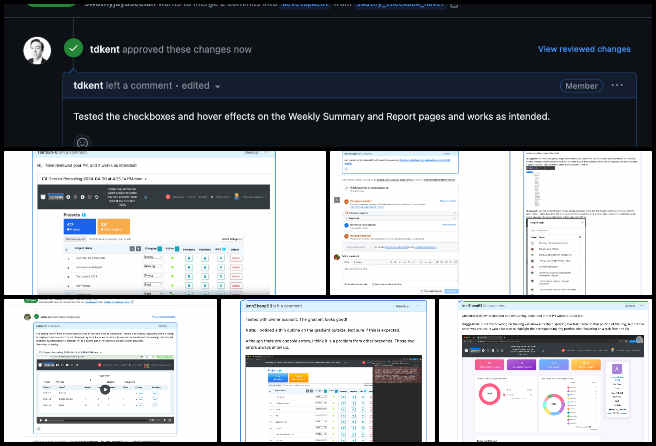



Connect with One Community